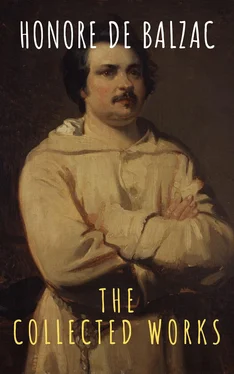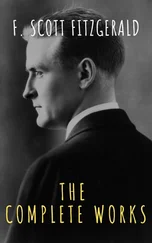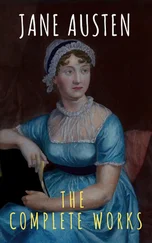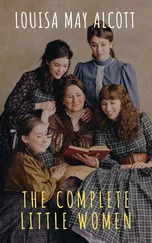Though each seat of this vehicle, with rounded sides like those of a pregnant woman, could rightfully carry only three passengers, it was not uncommon to see eight persons on the two seats jammed together like herrings in a barrel. Pierrotin declared that the travellers were far more comfortable in a solid, immovable mass; whereas when only three were on a seat they banged each other perpetually, and ran much risk of injuring their hats against the roof by the violent jolting of the roads. In front of the vehicle was a wooden bench where Pierrotin sat, on which three travellers could perch; when there, they went, as everybody knows, by the name of “rabbits.” On certain trips Pierrotin placed four rabbits on the bench, and sat himself at the side, on a sort of box placed below the body of the coach as a foot-rest for the rabbits, which was always full of straw, or of packages that feared no damage. The body of this particular coucou was painted yellow, embellished along the top with a band of barber’s blue, on which could be read, on the sides, in silvery white letters, “Isle-Adam, Paris,” and across the back, “Line to Isle-Adam.”
Our descendants will be mightily mistaken if they fancy that thirteen persons including Pierrotin were all that this vehicle could carry. On great occasions it could take three more in a square compartment covered with an awning, where the trunks, cases, and packages were piled; but the prudent Pierrotin only allowed his regular customers to sit there, and even they were not allowed to get in until at some distance beyond the “barriere.” The occupants of the “hen-roost” (the name given by conductors to this section of their vehicles) were made to get down outside of every village or town where there was a post of gendarmerie; the overloading forbidden by law, “for the safety of passengers,” being too obvious to allow the gendarme on duty — always a friend to Pierrotin — to avoid the necessity of reporting this flagrant violation of the ordinances. Thus on certain Saturday nights and Monday mornings, Pierrotin’s coucou “trundled” fifteen travellers; but on such occasions, in order to drag it along, he gave his stout old horse, called Rougeot, a mate in the person of a little beast no bigger than a pony, about whose merits he had much to say. This little horse was a mare named Bichette; she ate little, she was spirited, she was indefatigable, she was worth her weight in gold.
“My wife wouldn’t give her for that fat lazybones of a Rougeot!” cried Pierrotin, when some traveller would joke him about his epitome of a horse.
The difference between this vehicle and the other consisted chiefly in the fact that the other was on four wheels. This coach, of comical construction, called the “four-wheel-coach,” held seventeen travellers, though it was bound not to carry more than fourteen. It rumbled so noisily that the inhabitants of Isle-Adam frequently said, “Here comes Pierrotin!” when he was scarcely out of the forest which crowns the slope of the valley. It was divided into two lobes, so to speak: one, called the “interior,” contained six passengers on two seats; the other, a sort of cabriolet constructed in front, was called the “coupe.” This coupe was closed in with very inconvenient and fantastic glass sashes, a description of which would take too much space to allow of its being given here. The four-wheeled coach was surmounted by a hooded “imperial,” into which Pierrotin managed to poke six passengers; this space was inclosed by leather curtains. Pierrotin himself sat on an almost invisible seat perched just below the sashes of the coupe.
The master of the establishment paid the tax which was levied upon all public conveyances on his coucou only, which was rated to carry six persons; and he took out a special permit each time that he drove the four-wheeler. This may seem extraordinary in these days, but when the tax on vehicles was first imposed, it was done very timidly, and such deceptions were easily practised by the coach proprietors, always pleased to “faire la queue” (cheat of their dues) the government officials, to use the argot of their vocabulary. Gradually the greedy Treasury became severe; it forced all public conveyances not to roll unless they carried two certificates, — one showing that they had been weighed, the other that their taxes were duly paid. All things have their salad days, even the Treasury; and in 1822 those days still lasted. Often in summer, the “four-wheel-coach,” and the coucou journeyed together, carrying between them thirty-two passengers, though Pierrotin was only paying a tax on six. On these specially lucky days the convoy started from the faubourg Saint-Denis at half-past four o’clock in the afternoon, and arrived gallantly at Isle-Adam by ten at night. Proud of this service, which necessitated the hire of an extra horse, Pierrotin was wont to say: —
“We went at a fine pace!”
But in order to do the twenty-seven miles in five hours with his caravan, he was forced to omit certain stoppages along the road, — at Saint-Brice, Moisselles, and La Cave.
The hotel du Lion d’Argent occupies a piece of land which is very deep for its width. Though its frontage has only three or four windows on the faubourg Saint-Denis, the building extends back through a long court-yard, at the end of which are the stables, forming a large house standing close against the division wall of the adjoining property. The entrance is through a sort of passage-way beneath the floor of the second story, in which two or three coaches had room to stand. In 1822 the offices of all the lines of coaches which started from the Lion d’Argent were kept by the wife of the inn-keeper, who had as many books as there were lines. She received the fares, booked the passengers, and stowed away, good-naturedly, in her vast kitchen the various packages and parcels to be transported. Travellers were satisfied with this easy-going, patriarchal system. If they arrived too soon, they seated themselves beneath the hood of the huge kitchen chimney, or stood within the passage-way, or crossed to the Cafe de l’Echiquier, which forms the corner of the street so named.
In the early days of the autumn of 1822, on a Saturday morning, Pierrotin was standing, with his hands thrust into his pockets through the apertures of his blouse, beneath the porte-cochere of the Lion d’Argent, whence he could see, diagonally, the kitchen of the inn, and through the long court-yard to the stables, which were defined in black at the end of it. Daumartin’s diligence had just started, plunging heavily after those of the Touchards. It was past eight o’clock. Under the enormous porch or passage, above which could be read on a long sign, “Hotel du Lion d’Argent,” stood the stablemen and porters of the coaching-lines watching the lively start of the vehicles which deceives so many travellers, making them believe that the horses will be kept to that vigorous gait.
“Shall I harness up, master?” asked Pierrotin’s hostler, when there was nothing more to be seen along the road.
“It is a quarter-past eight, and I don’t see any travellers,” replied Pierrotin. “Where have they poked themselves? Yes, harness up all the same. And there are no parcels either! Twenty good Gods! a fine day like this, and I’ve only four booked! A pretty state of things for a Saturday! It is always the same when you want money! A dog’s life, and a dog’s business!”
“If you had more, where would you put them? There’s nothing left but the cabriolet,” said the hostler, intending to soothe Pierrotin.
“You forget the new coach!” cried Pierrotin.
“Have you really got it?” asked the man, laughing, and showing a set of teeth as white and broad as almonds.
“You old good-for-nothing! It starts to-morrow, I tell you; and I want at least eighteen passengers for it.”
Читать дальше












